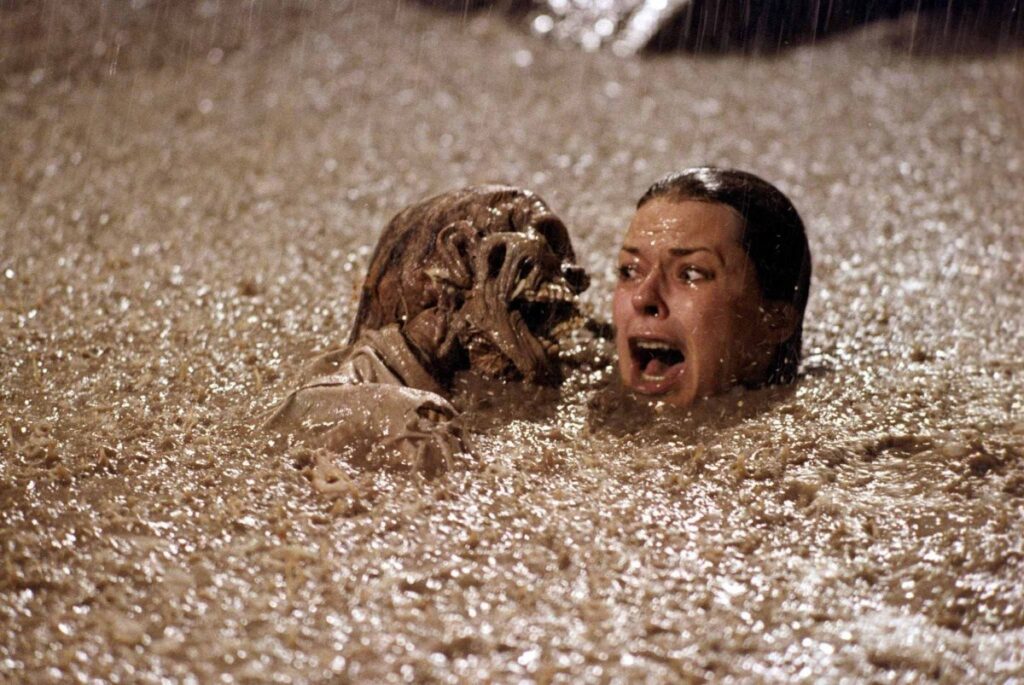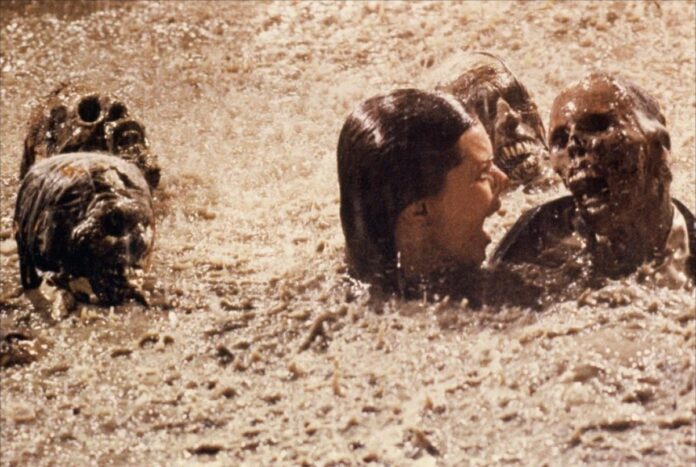“The 1982 Movie Poltergeist Used Real Skeletons as – Tymoff” is often remembered as a groundbreaking horror film that terrified audiences with its chilling story and innovative special effects. However, one aspect of the film that has continued to intrigue and disturb viewers is the revelation that real human skeletons were used in certain scenes. In this article, we will explore the history behind the use of real skeletons in Poltergeist, examine the reasons for this controversial decision, and discuss the ethical implications of using human remains in filmmaking.
The Making of Poltergeist
Released in 1982 and directed by Tobe Hooper, Poltergeist tells the story of the Freeling family, who are terrorized by malevolent spirits after moving into a new suburban home built on top of a cemetery. Produced by Steven Spielberg, the film received critical acclaim for its suspenseful storyline and groundbreaking special effects. However, controversy arose when it was revealed that real human skeletons were used in the film’s production.
Real Skeletons in Poltergeist
One of the most notorious aspects of Poltergeist is the use of real human skeletons in the film’s climactic swimming pool scene. In this scene, actress JoBeth Williams, who portrayed the character Diane Freeling, falls into a muddy pit filled with decomposing corpses. To achieve a realistic effect, real skeletons were used as props, adding a disturbing level of authenticity to the horror.
Reasons Behind the Decision
The decision to use real skeletons in Poltergeist was driven by a combination of factors, including budget constraints, practical considerations, and the desire for authenticity. At the time of the film’s production, creating realistic special effects using prosthetics and animatronics was costly and time-consuming. By using real skeletons as props, the filmmakers were able to achieve a chillingly lifelike effect without exceeding the film’s budget.
Additionally, the use of real skeletons allowed the filmmakers to create a sense of authenticity and realism in the film. Rather than relying solely on special effects, the inclusion of real human bones added a visceral and unsettling element to the horror, heightening the impact of the scene and immersing viewers in the terror of the Freeling family’s ordeal.

Ethical Considerations
While the use of real skeletons in Poltergeist may have contributed to the film’s eerie atmosphere and visual impact, it also raises ethical questions regarding the treatment of human remains in the entertainment industry. Critics argue that the use of real skeletons perpetuates a lack of respect for the deceased and desensitizes audiences to the reality of death.
Furthermore, the use of real skeletons in Poltergeist has been linked to rumors of a “curse” surrounding the film, with some suggesting that the use of human remains contributed to a series of tragic incidents involving cast and crew members. While these claims remain unsubstantiated, they underscore the potential consequences of using real human skeletons in filmmaking.
Legal and Regulatory Framework
The use of real human skeletons in films is subject to legal and regulatory oversight to ensure ethical standards are upheld. In the United States, the handling and use of human remains are governed by federal and state laws, including regulations set forth by the Occupational Safety and Health Administration (OSHA) and the Department of Health and Human Services (HHS).
Additionally, the use of real skeletons in films may require obtaining permits and adhering to guidelines established by professional organizations such as the Screen Actors Guild (SAG) and the Producers Guild of America (PGA). These organizations may have specific requirements regarding the sourcing, handling, and disposal of human remains used in film production.
Legacy of Poltergeist
Despite the controversy surrounding the use of real skeletons, Poltergeist remains a beloved and influential film in the horror genre. Its groundbreaking special effects, compelling storyline, and iconic scenes have solidified its place in cinematic history, inspiring generations of filmmakers and horror enthusiasts alike.
However, the use of real skeletons in Poltergeist continues to spark debate and controversy among fans and critics. While some argue that the inclusion of real human bones adds to the film’s authenticity and impact, others criticize it as unethical and disrespectful to the deceased.
Conclusion
The use of real human skeletons in “The 1982 Movie Poltergeist Used Real Skeletons as – Tymoff” is a topic that continues to fascinate and divide audiences decades after the film’s release. While the decision to use real human remains was driven by practical and artistic considerations, it also raises important legal, ethical, and cultural questions about the treatment of human remains in the entertainment industry.
As audiences continue to revisit and analyze Poltergeist, the debate surrounding the use of real skeletons serves as a reminder of the complex and sometimes controversial nature of filmmaking. Whether viewed as a groundbreaking innovation or a troubling ethical lapse, the use of real skeletons in Poltergeist has left an indelible mark on the history of cinema and continues to provoke thought and discussion among fans and scholars alike.
(FAQs)
1. Why were real skeletons used in the movie Poltergeist? Real skeletons were used in certain scenes of Poltergeist for practical and budgetary reasons. At the time of the film’s production, creating realistic special effects using prosthetics and animatronics was costly and time-consuming. By using real skeletons as props, the filmmakers were able to achieve a chillingly lifelike effect without exceeding the film’s budget.
2. Were the real skeletons ethically sourced? The ethical sourcing of the real skeletons used in Poltergeist has been a subject of debate and controversy. While some sources claim that the skeletons were obtained ethically from medical institutions and universities, others suggest that they may have been obtained through questionable means. Regardless, the use of real human remains in filmmaking raises ethical questions about the treatment of the deceased and the responsibility of filmmakers to uphold ethical standards.
3. Did the use of real skeletons contribute to the film’s success? The use of real skeletons in Poltergeist has been cited as a contributing factor to the film’s success, particularly in creating a sense of authenticity and realism in certain scenes. The inclusion of real human bones added a visceral and unsettling element to the horror, heightening the impact of the film’s most chilling moments. However, the controversy surrounding the use of real skeletons has also generated negative publicity for the film.

